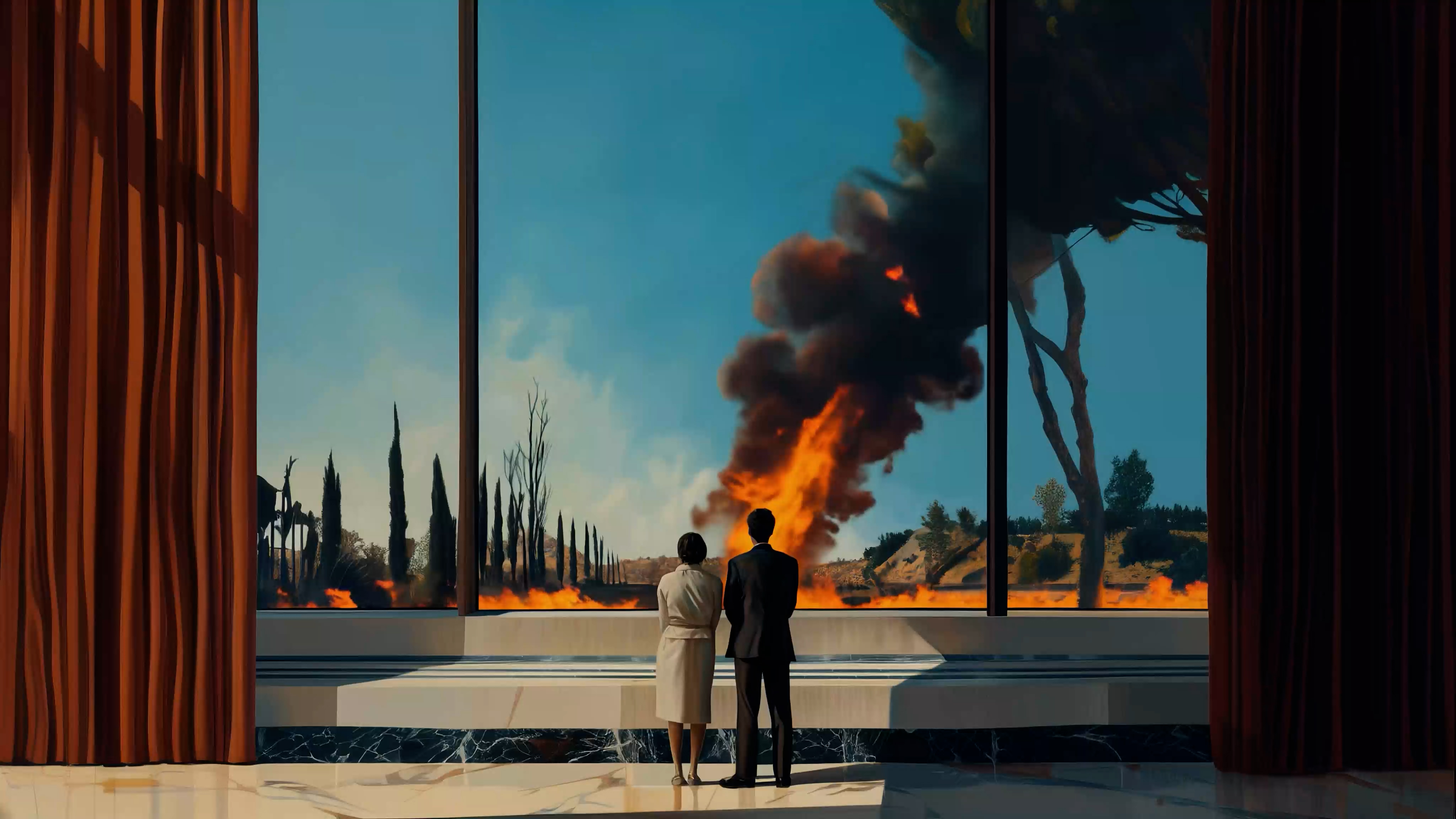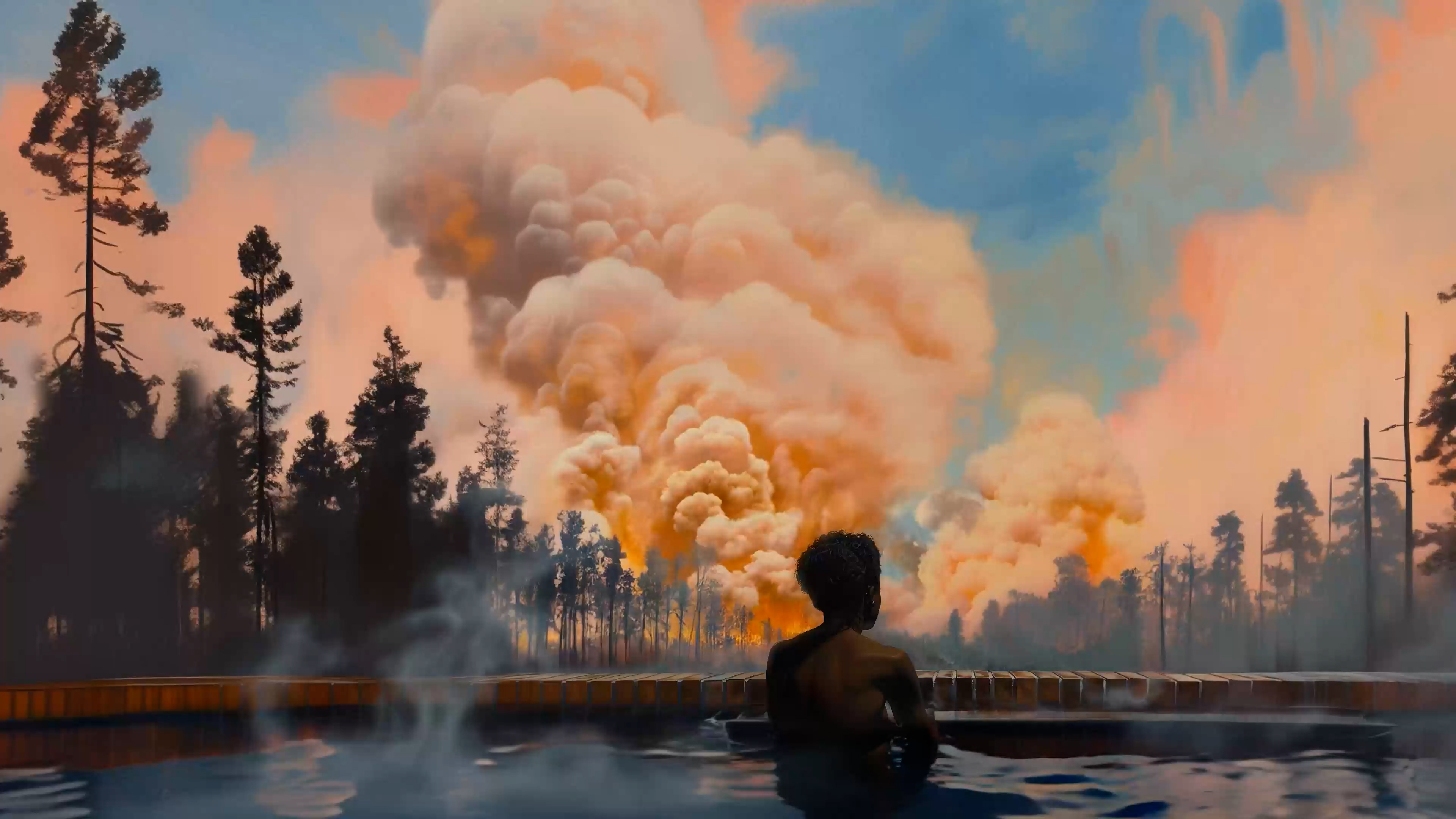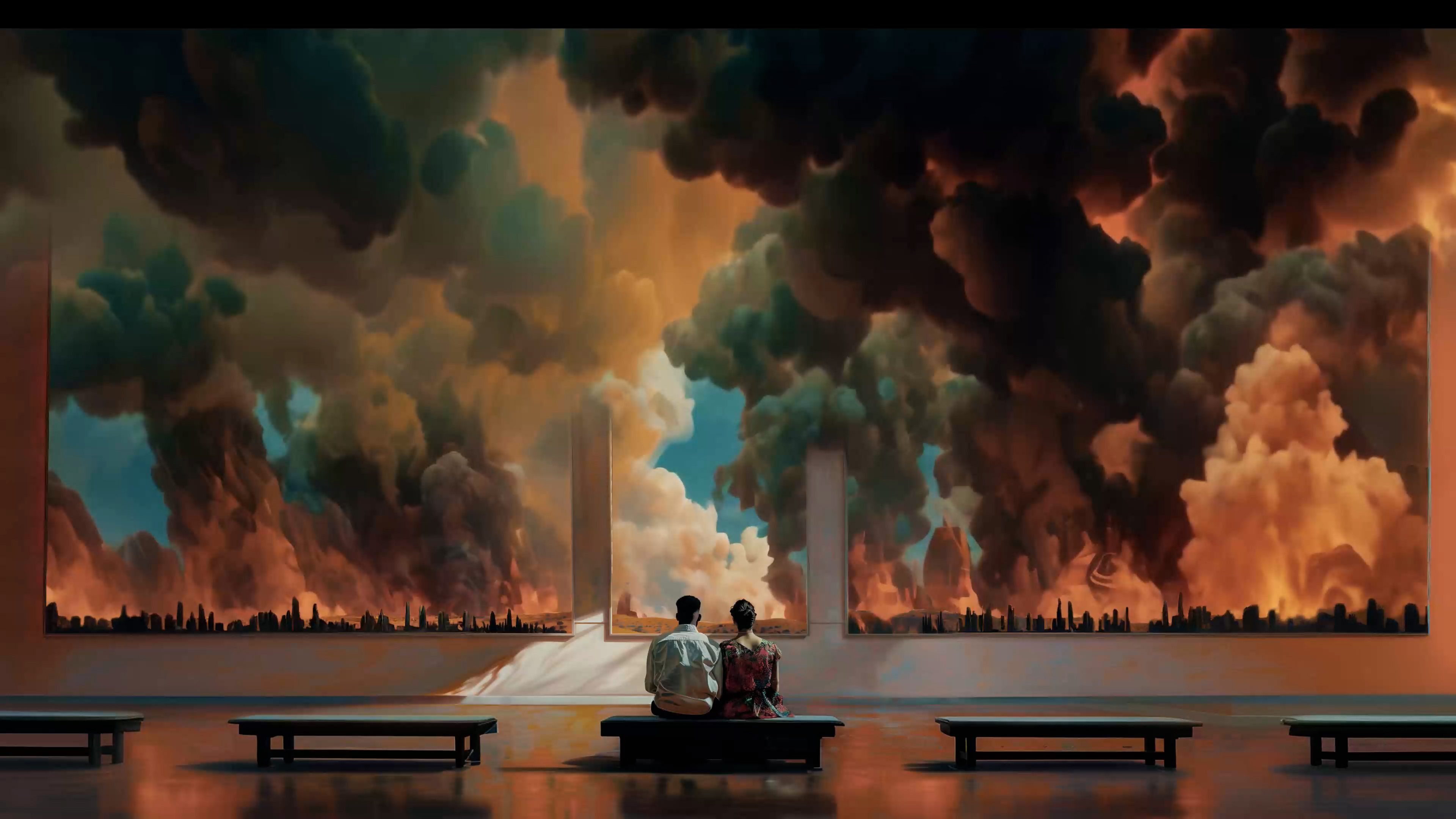Louis-Paul Caron is a French digital artist based in Lyon, whose work has been exhibited internationally — including at Art Basel, Seoul, New York, Milan, and Dubai. Through video art, oil painting, and artificial intelligence, he explores our evolving relationship with nature and climate change, bridging digital and traditional practices. Trained in design and digital arts at École Boulle, Design Academy Eindhoven, and ENSAD Paris, Caron blends classical painting techniques with generative algorithms and immersive virtual environments. His work engages with how the climate crisis transforms the way we see, think, and imagine the future. Attuned to the spirit of our time, he translates today’s most pressing environmental and technological challenges into compelling visual narratives. We spoke to him about the power of art in engaging with the environment.
1. How would you describe your artistic practice?
My work lives where climate change meets technology. I don’t show reality as it is, I create metaphors, placing characters in scenes that feel both painted and cinematic. Through these stories, I explore how our everyday lives are tied to the collapse of the environment. Mixing the textures of painting with the possibilities of artificial intelligence, I try to find a hybrid language that feels alive, fragile, and in constant dialogue between nature and the artificial.

2. What makes art such a powerful way of communicating and engaging with the climate crisis?
Art reaches beyond facts and headlines. It is for me one of the most powerful ways to speak about the climate. We are constantly surrounded by facts, data, and news, but they often pass too quickly. With art, I can slow things down, create images that stay in the mind and speak to emotions in a way words cannot. My goal is not to inform, but to make people feel and to open a space for reflection where the urgency of the crisis becomes impossible to ignore.

3. What interests you about collaborating with AI?
Working with AI opens new ways to imagine and animate my images. I love how it can give movement to smoke, fire, or water, creating scenes that feel between painting, cinema, and something entirely new. At the same time, using AI raises questions I can’t ignore: about ethics, the environment, and how we understand what is real or artificial. For me, it’s not just a tool, it’s part of the story I tell, a way to explore both our world and the way we create images.
4. How does working with technology help with your exploration of nature?
Technology is entirely man-made, and I find it fascinating to place it next to the organic world of nature. My work plays with this contrast, showing how tools that usually improve our lives can also harm the environment. At the same time, technology gives me ways to bring nature to life in new forms, through animation, texture, and light, helping me reveal both its fragility and its beauty.

5. What do you want the viewer to take away from your work?
I want people to feel the tension between our daily lives and the ongoing environmental crisis. It’s not about blaming individuals, but about awakening awareness, showing the world in a way that is both beautiful and urgent. My hope is that viewers pause, reflect, and sense the fragility of the world around them, a quiet recognition of what is at stake, and perhaps a spark of curiosity about how we might act.